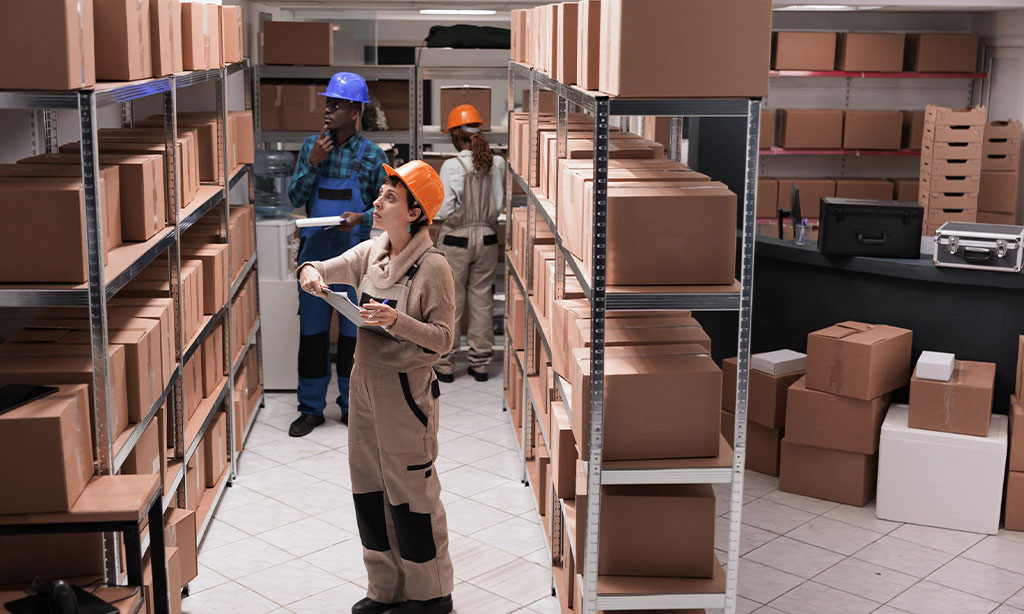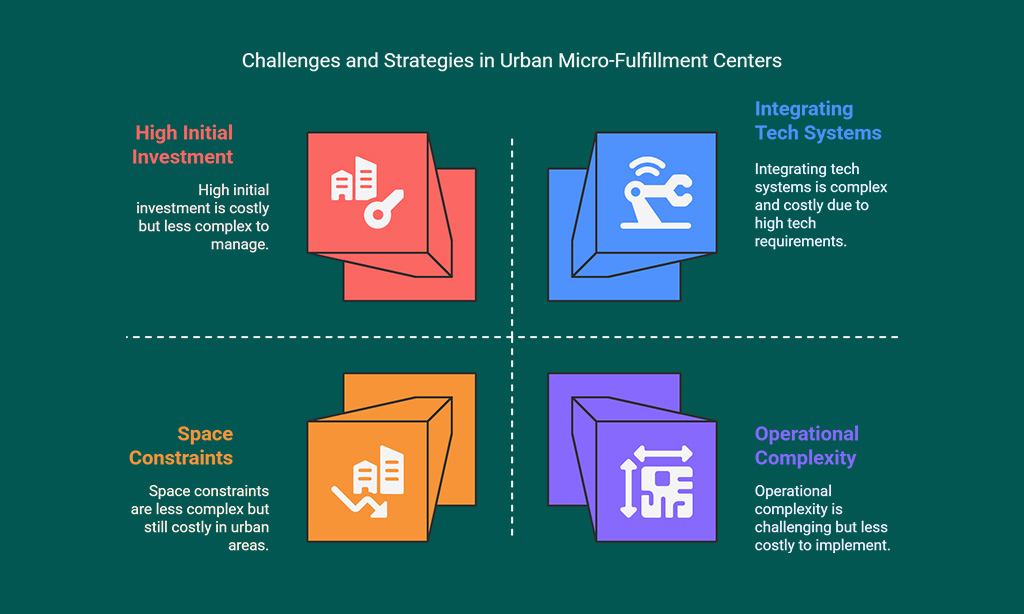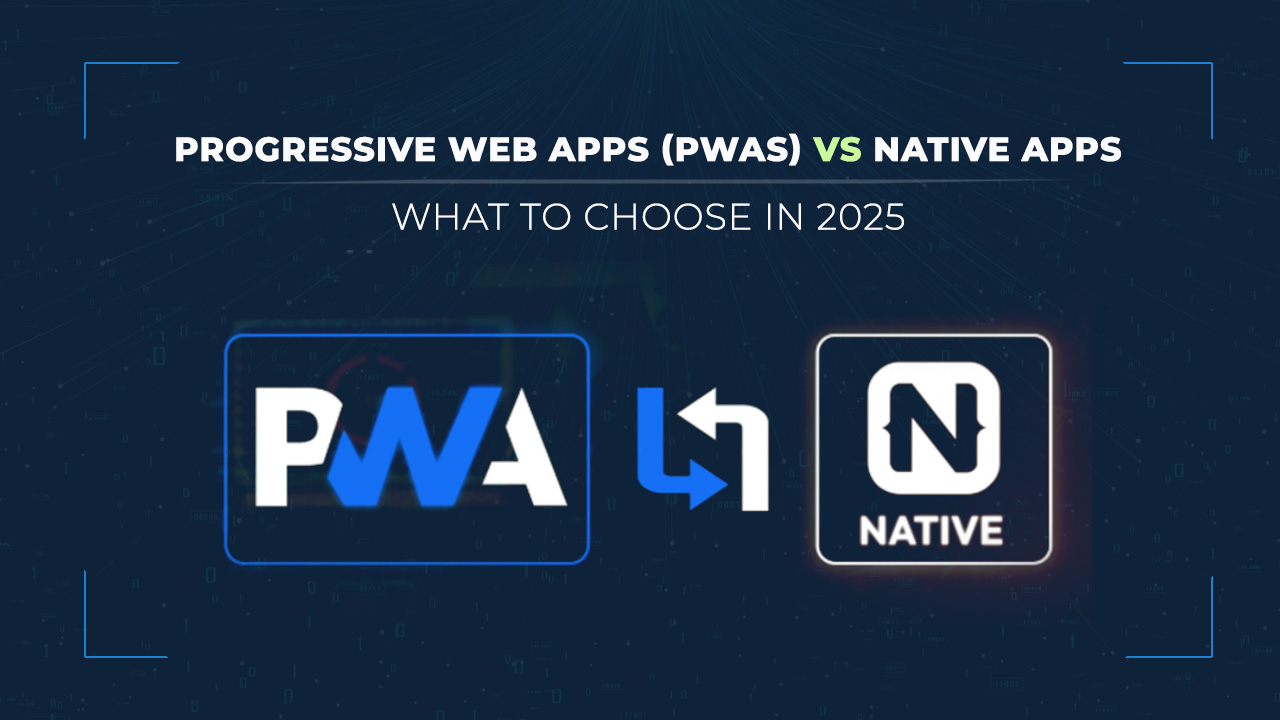Have you waited days for an online order to arrive? Many shoppers now expect same-day delivery, but most stores can’t keep up. The old way of shipping from big warehouses far away just doesn’t work fast enough anymore.
This gap between what customers want and what stores can do is getting bigger every day.
Small, smart warehouses are changing how we shop online. These micro-fulfillment centers sit right in city areas, close to where people live. They use robots and smart systems to get orders ready super fast.
Most are only about the size of a small grocery store but pack a big punch for speed.
This blog will show you how these tiny warehouses are fixing big problems in online shopping. You’ll learn why both small shops and big chains are rushing to build them in urban areas.
We’ll explain how they cut delivery times and shipping costs while making customers happier. The future of shopping is happening now.
Key Takeaways
- Micro-fulfillment centers are small warehouses (10,000-20,000 sq ft) in city areas that use robots to speed up online orders.
- Same-day delivery demand is growing fast at 25.3% per year, with 61% of shoppers now expecting same-day delivery for morning orders.
- These urban centers cut shipping costs by reducing the “last mile” distance, which makes up 53% of total delivery expenses.
- Robots in these centers pick items up to 10 times faster than humans can, working around the clock without breaks.
- Setting up a micro-fulfillment center costs $3-5 million but saves money long-term through faster delivery and lower shipping costs.
What Are Urban Micro-Fulfillment Centers?
Urban micro-fulfillment centers are small warehouses set up in city spots to speed up order delivery. They bring products closer to shoppers, using smart tech and robots to pack orders fast in spaces much smaller than big warehouses.
Definition and Core Features
Micro-fulfillment centers are small warehouses that sit close to where people live in cities. These compact spaces range from 10,000 to 20,000 square feet, about as big as a small grocery store.
They store products that customers order online and help get these items to buyers fast. Unlike big warehouses far from town, these centers fit right into busy areas where many shoppers live.
They cut down the time it takes to get orders to your door.
These centers run on smart tech to make up for their small size. They use robots, AI systems, and special warehouse tools to track and move items. The tech helps workers find products fast and pack orders without mistakes.
Most centers have tall storage racks with robots that zoom up and down to grab items. Computers keep count of every product and tell the system where to find things. This mix of small size and high tech helps online stores compete with giants like Amazon in the race to deliver goods on the same day you order them.
How They Differ from Traditional Fulfillment Centers
Urban micro-fulfillment centers represent a sharp break from traditional warehousing models. These compact facilities serve as strategic chess pieces in the e-commerce delivery game.
| Feature | Traditional Fulfillment Centers | Micro-Fulfillment Centers (MFCs) |
|---|---|---|
| Location | Remote industrial zones, often far from city centers | Urban areas, suburban neighborhoods, inside retail stores, or standalone buildings in high-density areas |
| Size | Massive warehouses (100,000+ sq ft) | Compact facilities (10,000-20,000 sq ft) |
| Processing Speed | Standard processing times | Up to 10x faster with automation systems |
| Delivery Range | Regional or national coverage | Local coverage (5-10 mile radius) |
| Inventory Selection | Wide range of products | Limited to high-velocity items |
| Space Usage | Horizontal storage with aisles | Vertical storage for maximum space optimization in tight urban spots |
| Labor Requirements | Large workforce | Smaller teams with automation support |
| Technology Level | Varies from basic to advanced | Highly automated with robotic systems |
| Order Types | Built for bulk shipping | Designed for small, frequent orders |
| Setup Costs | Higher total cost but lower per square foot | Lower total cost but higher per square foot |
Traditional centers focus on scale and breadth. MFCs prioritize speed and proximity. The old model worked like a marathon runner, covering great distances. The new micro model acts like a sprinter, racing to deliver goods fast. This shift fits perfectly with modern shoppers who want products now, not tomorrow.
Why Are Urban Micro-Fulfillment Centers on the Rise?
Urban micro-fulfillment centers are booming because shoppers now expect their online orders to arrive fast. Big companies like Amazon have set a new standard with quick shipping, pushing other sellers to find ways to match this speed in busy city areas.
Market Trends and Consumer Expectations
Online shoppers now want their stuff faster than ever. People expect to get items the same day they click “buy.” This big shift has pushed stores to find new ways to deliver quickly.
The numbers show this trend clearly – same-day delivery spending is growing at 25.3% each year from 2016 to 2022. Most shoppers will soon see same-day delivery as normal, not special.
This change comes from our busy lives and the need for speed in everything we do.
E-commerce growth and city living drive this trend too. More folks live in urban areas where they shop online often. They want their orders now, not next week. Stores must keep up or lose customers to faster rivals.
This rush for speed has made micro-fulfillment centers pop up across cities. These small hubs cut delivery times and make shoppers happy. The retail world has changed, and the race to your doorstep is on.
The Demand for Faster Delivery
Shoppers today want their stuff fast. Really fast. Numbers show that 61% of people expect same-day delivery for orders they place before noon. Gone are the days when waiting a week for packages was normal.
Now, most folks (64%) think orders placed by 5 p.m. should arrive the next day. This rush for speed has pushed stores to find new ways to get products to customers quickly.
This speed craze isn’t just about being impatient. People shop online because it saves time. If they still have to wait days for items, that benefit shrinks. Amazon Prime changed the game with its two-day shipping promise.
Now other companies must keep up or lose sales. The data proves it: 58% of shoppers look for items they can get the same day. Stores that can’t deliver fast will see customers click away to competitors who can.
Key Benefits of Urban Micro-Fulfillment Centers
Urban micro-fulfillment centers cut delivery times from days to hours. They also slash shipping costs while making customers happier with quick service.
Faster Delivery Times
Urban micro-fulfillment centers cut delivery times to hours instead of days. Walmart and Albertsons now offer same-day or under-an-hour grocery drop-offs thanks to these small, local hubs.
These centers sit right in city neighborhoods, not far from where most shoppers live. This closeness means orders travel shorter paths to reach homes.
The speed boost changes how we shop online. Five years ago, two-day shipping felt fast. Now, many shoppers expect their items the same day they click “buy.” MFCs make this possible by storing popular products in small, smart spaces that use robots to grab items quickly.
This setup helps stores compete with giants like Amazon while keeping shipping costs down. For shoppers, it means less waiting and more getting what they need when they need it.
Reduced Last-Mile Costs
Urban micro-fulfillment centers cut delivery costs in big ways. They sit right in city centers, so packages travel much shorter distances to reach customers. This short trip matters a lot! The “last mile” of delivery eats up to 53% of total shipping costs.
MFCs slash these expenses by putting products closer to buyers. Trucks use less fuel, drivers finish more deliveries per hour, and companies save money.
These savings add up fast for e-commerce businesses. MFCs help stores stay price-competitive while still offering fast shipping options. The math is simple: shorter trips mean lower gas costs and fewer delivery vehicles needed.
Plus, these centers create a green bonus by cutting carbon emissions from shorter travel routes. For online retailers fighting tight margins, this cost drop can make the difference between profit and loss.
Enhanced Customer Experience
Micro-fulfillment centers put products closer to shoppers, making happy customers. Stores can ship items faster and offer more pickup choices. This cuts wait times and boosts trust.
Shoppers love getting their stuff the same day they order it. In fact, 45% of city shoppers say same-day delivery matters a lot to them. That’s much higher than the 34% of suburban shoppers who feel the same way.
MFCs also help keep items in stock better. They track inventory with smart systems that know when to reorder. This means fewer empty shelves and fewer sad faces when a product is gone.
Shoppers get what they want when they want it. This makes them come back to buy more. Better stock control plus fast delivery equals big smiles from online shoppers.
How Do Urban Micro-Fulfillment Centers Operate?
Urban micro-fulfillment centers run on smart systems that track every item in real time. These compact hubs use robots and AI to pick orders faster than humans, cutting delivery times from days to hours.
Inventory Management Systems
Micro-fulfillment centers run on smart inventory systems that track every item in real time. These systems tell workers what products are in stock and where to find them fast. Modern warehouse software helps staff know when to order more items before they run out.
This cuts down on delays and keeps customers happy with quick shipping.
The best part? These systems talk to robots that grab items from shelves without human help. Computers scan orders and send the right robots to pick up products. This makes the whole process much faster than old-style warehouses.
With good inventory tracking, online stores can ship orders the same day in busy city areas where space costs a lot.
Automation and Robotics in Order Fulfillment
Robots now run the show in modern micro-fulfillment centers. These smart machines zip through tight spaces, picking items off shelves up to 10 times faster than humans can. Small wheeled bots grab products while mechanical arms pack boxes with amazing speed.
The systems work around the clock without breaks, cutting down wait times for shoppers who want their stuff fast.
Advanced tech like Vertical Lift Modules and Horizontal Carousels make these urban centers super quick. These tools store items in tight spaces and bring them right to workers when needed.
The mix of smart machines and smart software means fewer mistakes in orders. This keeps customers happy and helps stores save money on fixing wrong orders. For online shopping to keep growing, these robot helpers will become even more common in city centers.
Role of Data and AI in Optimization
Data and AI make micro-fulfillment centers work better. Smart systems track what items sell fast and which ones sit on shelves. This helps stores know what to stock and where to put it.
The global AI market will grow from $214.6 billion in 2024 to $1,339.1 billion by 2030. This growth shows how important these tools are becoming. AI helps cut costs by finding the fastest routes for delivery trucks.
It also spots trends in online shopping habits. Computers can now predict what customers will buy before they even click “order.” This makes the supply chain faster and helps with inventory management.
Challenges and Limitations
Urban micro-fulfillment centers face big hurdles like high setup costs, tight city spaces, and tricky tech systems that can make or break their success – but the rewards for those who get it right could change how we shop forever.
Read on to learn how companies tackle these roadblocks!
High Initial Investment Costs
Setting up micro-fulfillment centers in cities costs a lot of money upfront. Companies must buy robots, smart shelves, and computer systems that work together. The price tag can shock many business owners, especially small ones trying to compete with big names.
In 2017, stores spent 47% of their money on shipping stuff, up from 42% just a year before.
Money goes into buying or renting space in busy city spots where prices are high. Then comes the cost of machines that pick and pack orders fast. These robots aren’t cheap, but they help stores keep up with fast delivery needs.
Many shops team up with tech firms to split these big costs and make the math work better for their bottom line.
Space Constraints in Urban Areas
Urban micro-fulfillment centers face major space problems in city areas. Most buildings in cities weren’t made for modern storage needs. Old retail spots and small warehouses often lack the right height, floor strength, or loading areas for today’s shipping demands.
Finding 10,000-30,000 square feet in prime city spots costs a lot more than space in rural areas.
Companies must get creative with their space use. Some build up instead of out, using tall storage systems that reach to the ceiling. Others split inventory between small city hubs and bigger warehouses outside town.
The high rent forces businesses to make every square foot count through smart shelving, narrow aisles, and robots that need less room than human workers. This tight space puzzle is why many firms think twice before opening city centers.
Complexity of Operations and Integration
Running micro-fulfillment centers in cities brings big challenges. Staff must track items across many small sites instead of one big warehouse. This makes stock control much harder.
Each center needs its own team, tech systems, and delivery plans. Many companies struggle to link these small centers with their main systems. The mix of robots and workers also needs careful planning to avoid mix-ups.
Getting these centers to work with other parts of the business is tough too. They must connect to online stores, payment systems, and delivery services without errors. Many firms face zoning rules that limit where they can put these centers in busy areas.
Training staff to use new tech while keeping service friendly adds another layer of work. Despite these hurdles, most e-commerce companies find the speed benefits worth the extra effort.
Micro-Fulfillment vs. Traditional Fulfillment Centers
Micro-fulfillment centers beat traditional warehouses in speed, often cutting delivery times from days to hours. They cost more to set up but save money on shipping, making them a smart choice for companies racing to meet customer demands for faster service.
Speed and Efficiency Comparison
Urban micro-fulfillment centers beat traditional warehouses in speed by a mile. These small hubs process orders up to 10 times faster than old-school manual methods. Think about it – a normal warehouse might take hours to find, pack, and ship your item.
A micro-center can do it in minutes! This speed boost comes from smart robots and computer systems that know exactly where each product sits. They zip through narrow aisles and grab items without human delay.
The real magic happens in delivery times. These small urban centers sit right in city neighborhoods, cutting travel time to your door. Many now offer same-day or even one-hour delivery options that big, far-away warehouses simply can’t match.
For shoppers who want their stuff now, this change is huge. Online stores with these quick centers see happier customers and fewer cart drop-offs. The race for faster shipping keeps pushing more stores to adopt this model despite the high startup costs.
Cost and Scalability Differences
Micro-fulfillment centers cost less to run than big warehouses in the long term. They need less space in cities where real estate is pricey. A small MFC might cost $3-5 million to set up, but saves money on shipping costs and fuel.
These savings add up fast when you deliver many orders each day. MFCs also grow with your business needs. You can add more robots or storage units as sales increase.
Traditional centers need huge money upfront and take longer to expand. They work best for stores with tons of items to stock. MFCs shine for businesses that sell fast-moving goods like groceries.
The math is simple: less travel distance equals lower costs. For online shopping growth, MFCs offer the right mix of speed and money-saving benefits. They help cut carbon footprints too, which matters to today’s shoppers.
The Future of Urban Micro-Fulfillment Centers in E-Commerce
Urban micro-fulfillment centers will grow fast in the coming years. Statista shows big jumps in this market as more people shop online. These small hubs will use more robots and smart tech to cut costs.
AI will help plan where items go and how to pick them fast. This means your orders will reach you even quicker than they do now.
The next wave of these centers will pop up in more city spots like New York City. They’ll offer same-day drops for most items you buy online. Stores that mix online with brick-and-mortar shops will win big here.
Some will add cool extras like custom packaging or green delivery options to fight climate change. Less driving means lower carbon marks from all those vans and trucks racing around town.
Takeaways
Micro-fulfillment centers mark a big shift in how we shop online. These small, smart hubs bring products closer to shoppers and cut down wait times. Robots and AI help these centers work faster than old warehouses, making same-day delivery the new normal.
While costs and space limits pose problems, the gains in speed and happy customers push more stores to jump on board. As online shopping grows, these mini centers will keep changing how goods move from click to doorstep.
FAQs on Rise of Urban Micro-Fulfillment Centers
1. What are micro-fulfillment centers and why are they growing in urban areas?
Micro-fulfillment centers are small warehouses in city locations that help stores ship orders fast. They’re popping up in urban areas because people want their stuff quickly. These tiny hubs cut down on delivery times and help meet the boom in online shopping.
2. How do micro-fulfillment centers improve last-mile delivery?
These small centers sit closer to customers than big warehouses. This means shorter trips for delivery trucks in busy city streets. They slash delivery times and make same-day or next-day delivery possible without huge shipping costs.
3. What technology makes micro-fulfillment centers work well?
Most use warehouse automation and smart systems to pick products fast. Automated storage and retrieval systems (AS/RS) help workers grab items without running around a big space. The tech boosts order fulfillment speed and cuts down on mistakes.
4. How do micro-fulfillment centers help grocery retailers?
Grocery stores face tough challenges with fresh food delivery. Small fulfillment hubs let them store products close to shoppers. They can offer in-store pickup or quick home delivery, which keeps food fresh and customers happy.
5. Do micro-fulfillment centers save money for businesses?
Yes! They need less space than big distribution centers, so real estate costs drop. They also trim transportation expenses by being near customers. Many companies find better operational efficiency with these small hubs than with traditional supply chains.











































